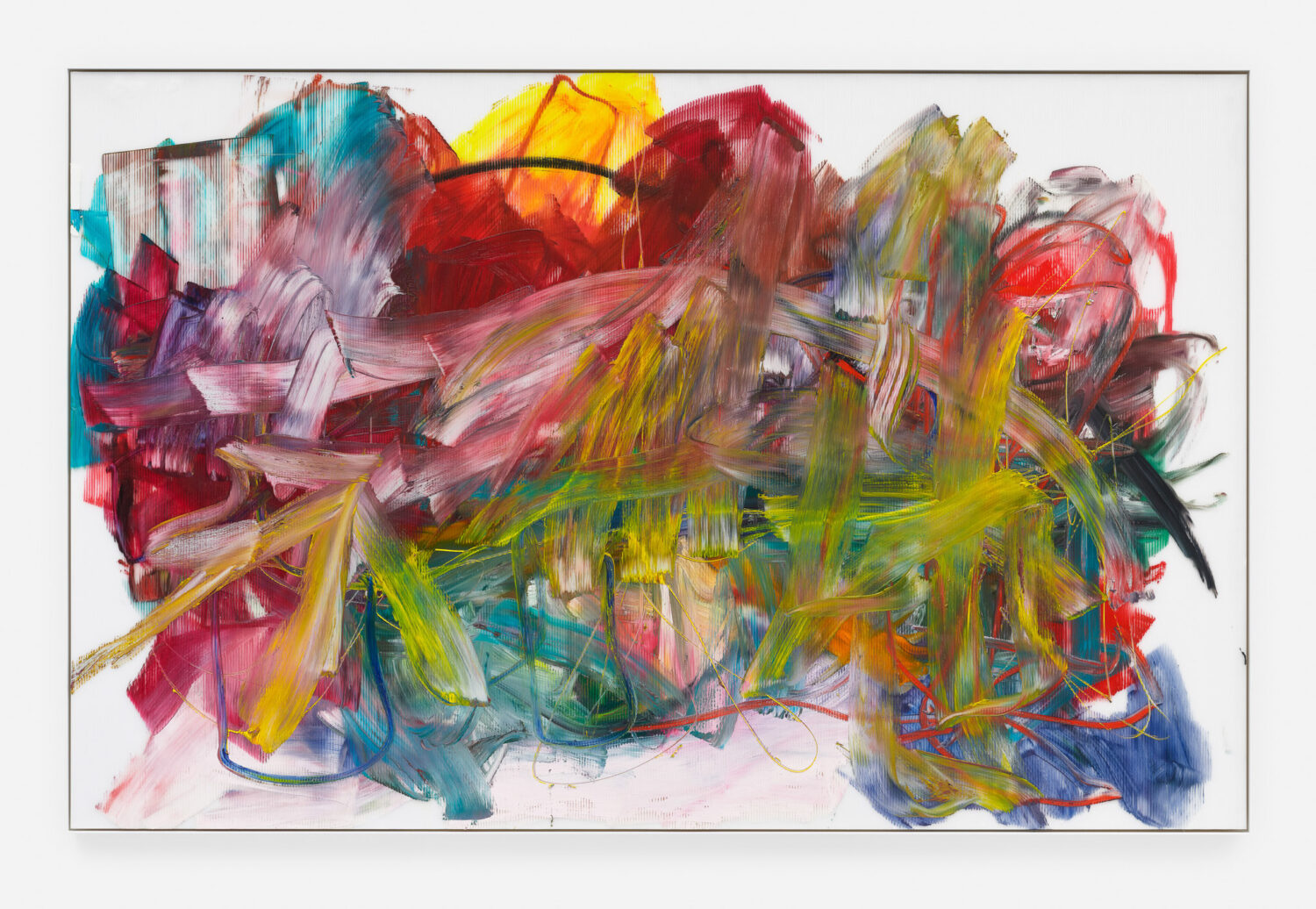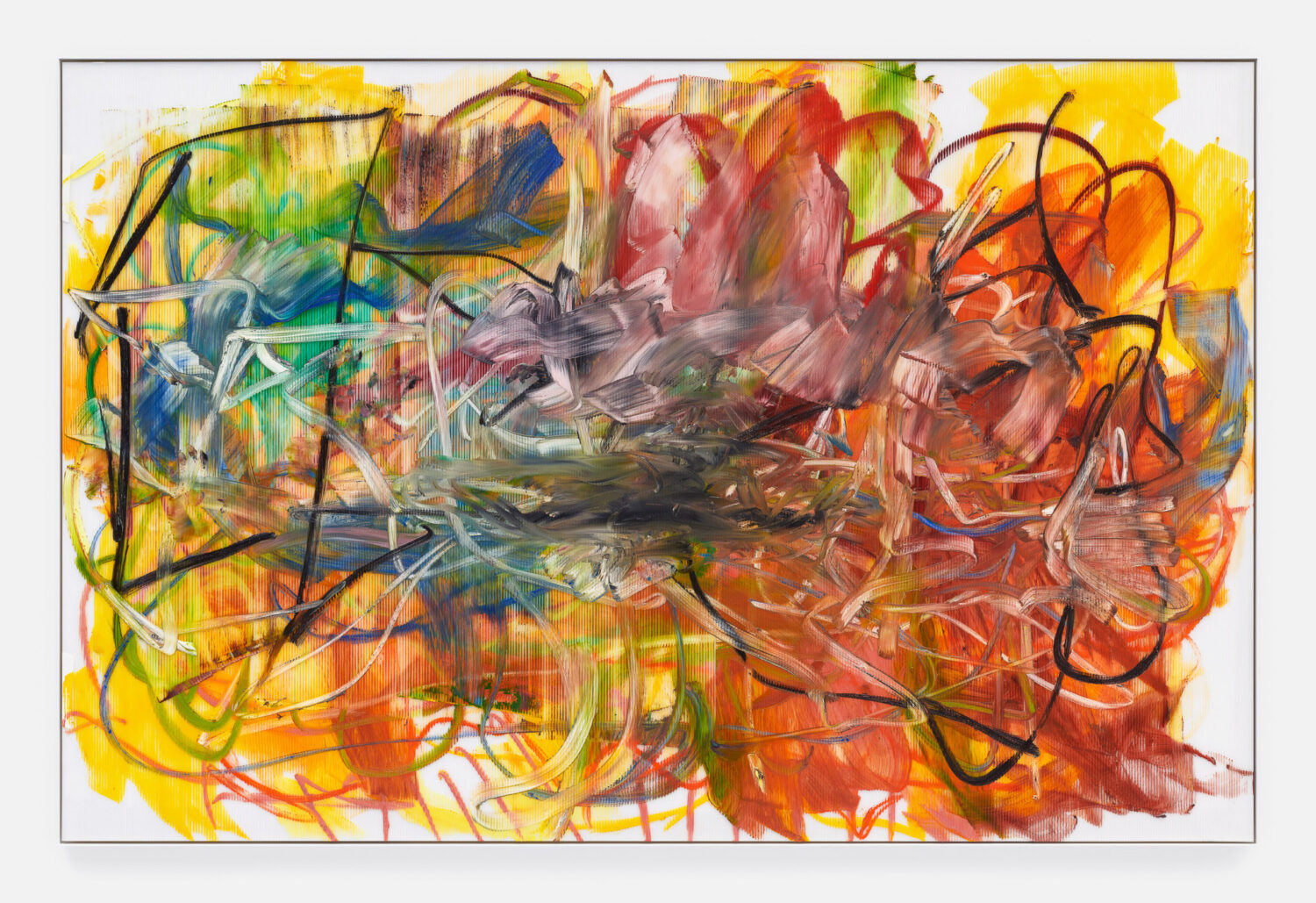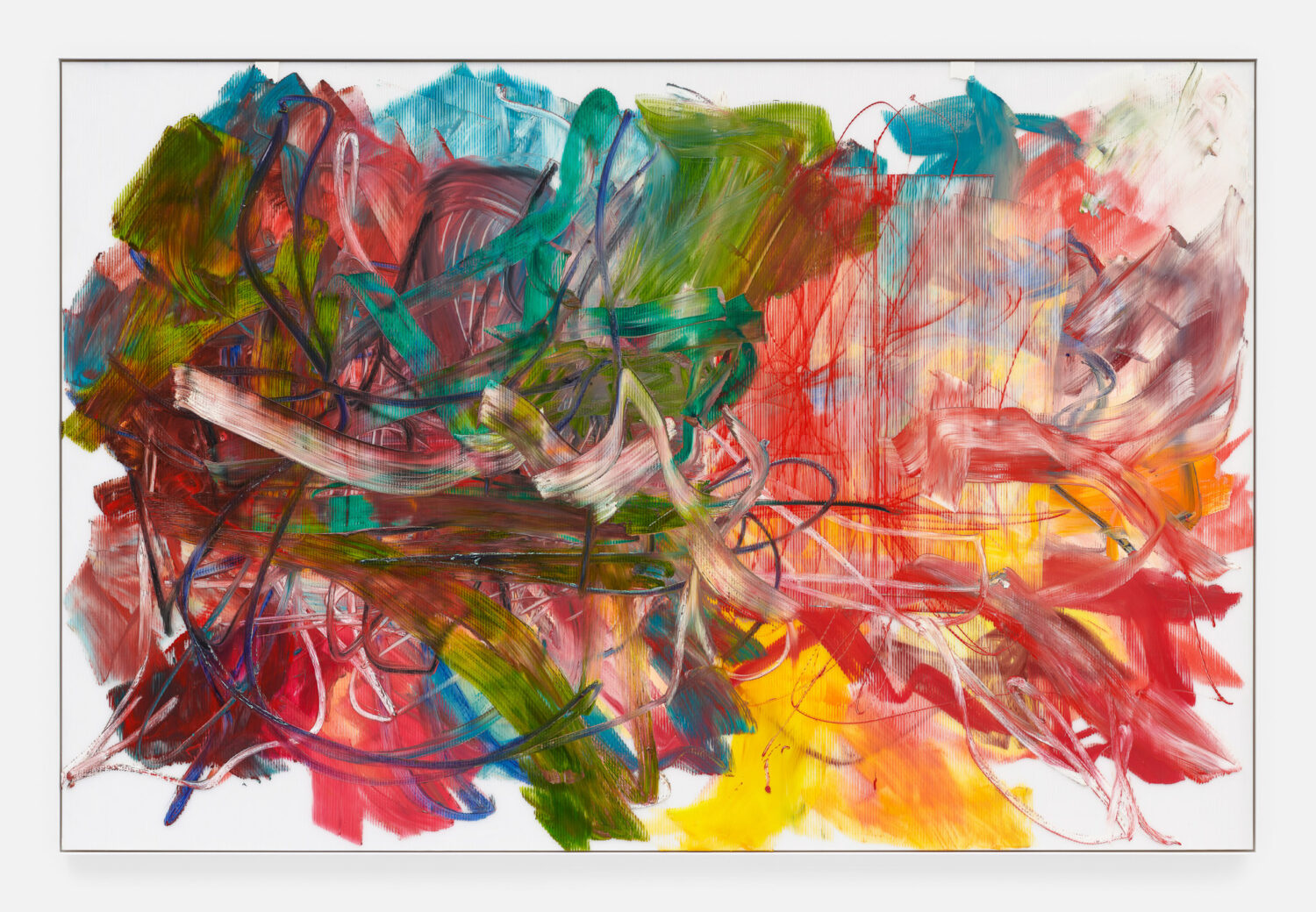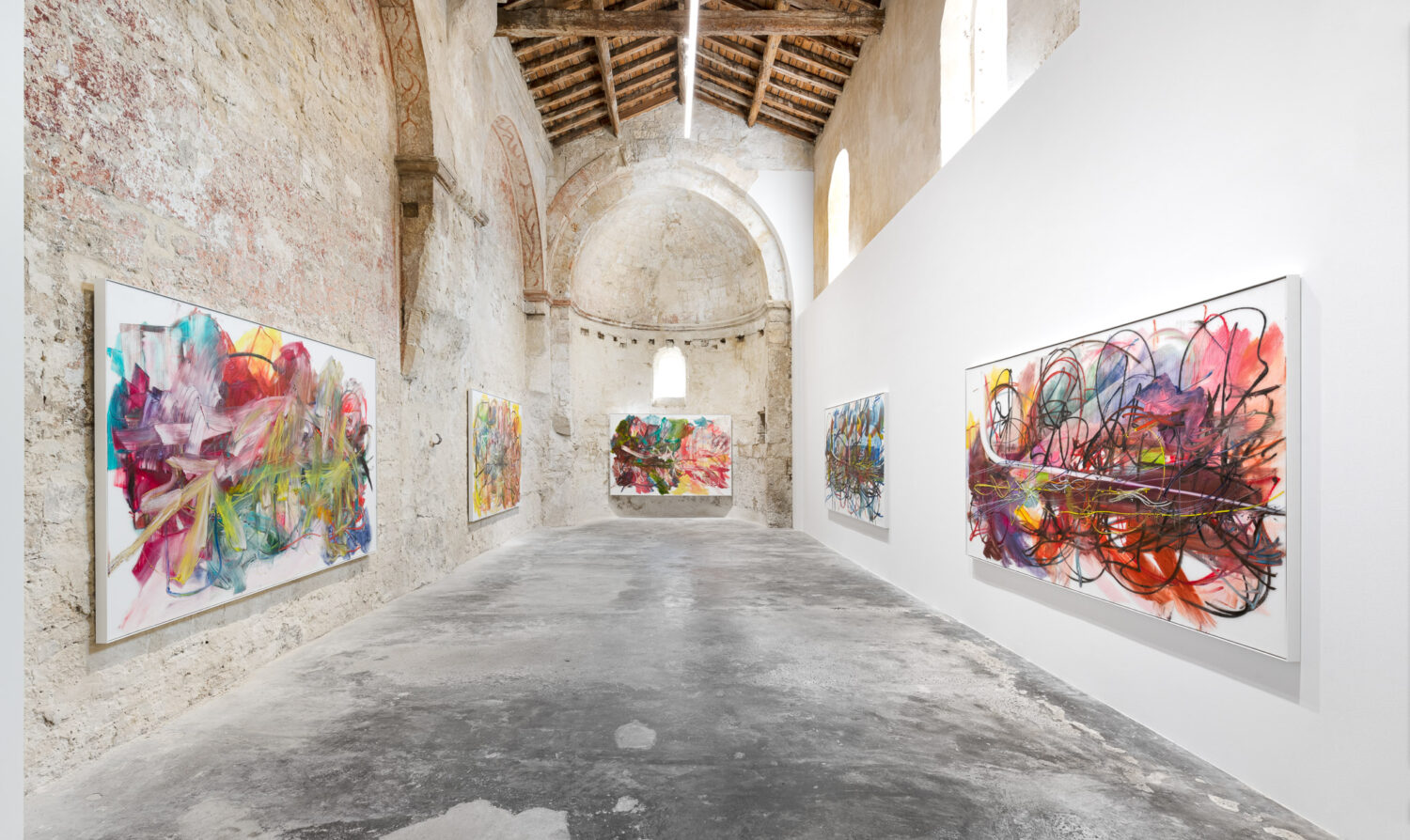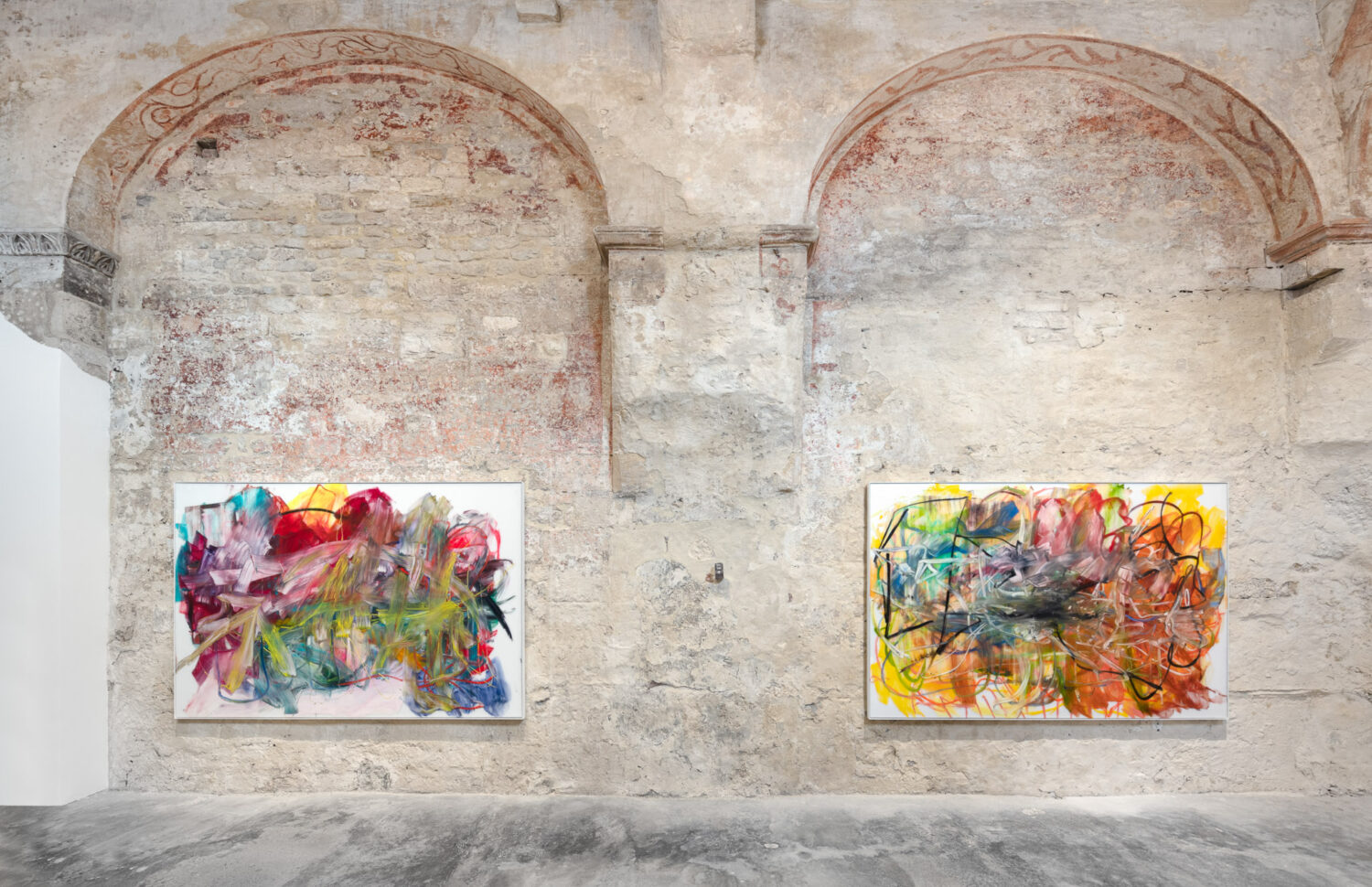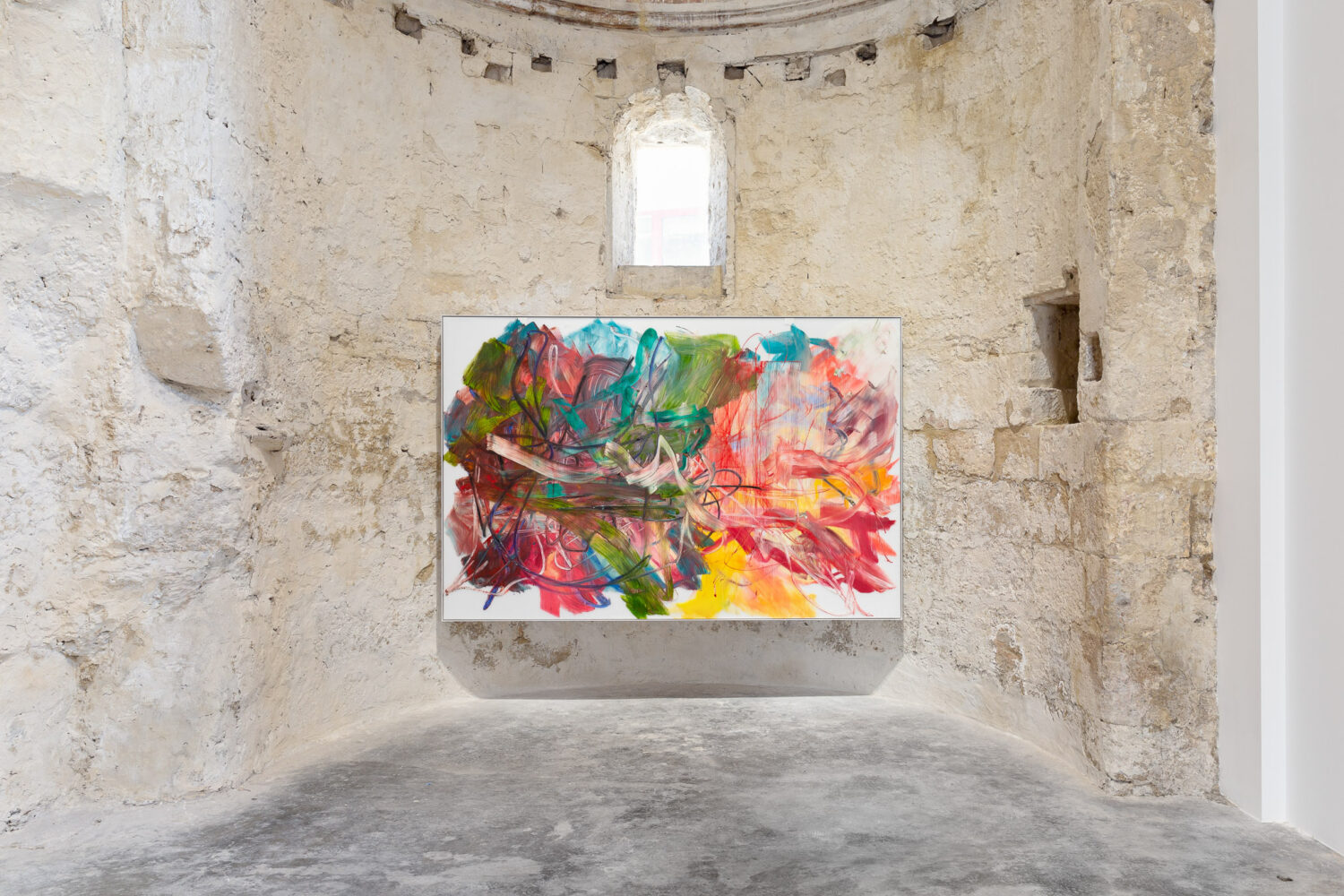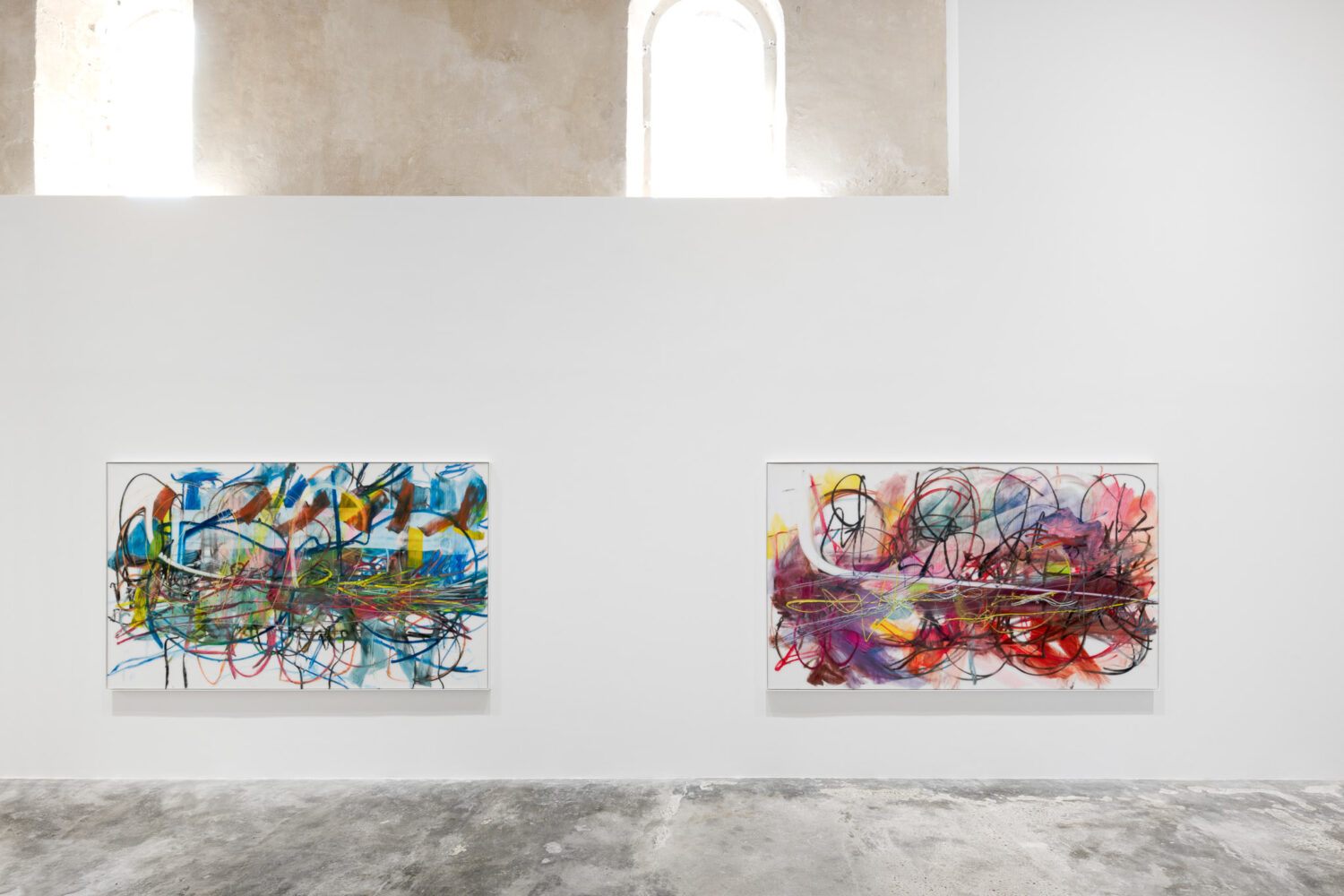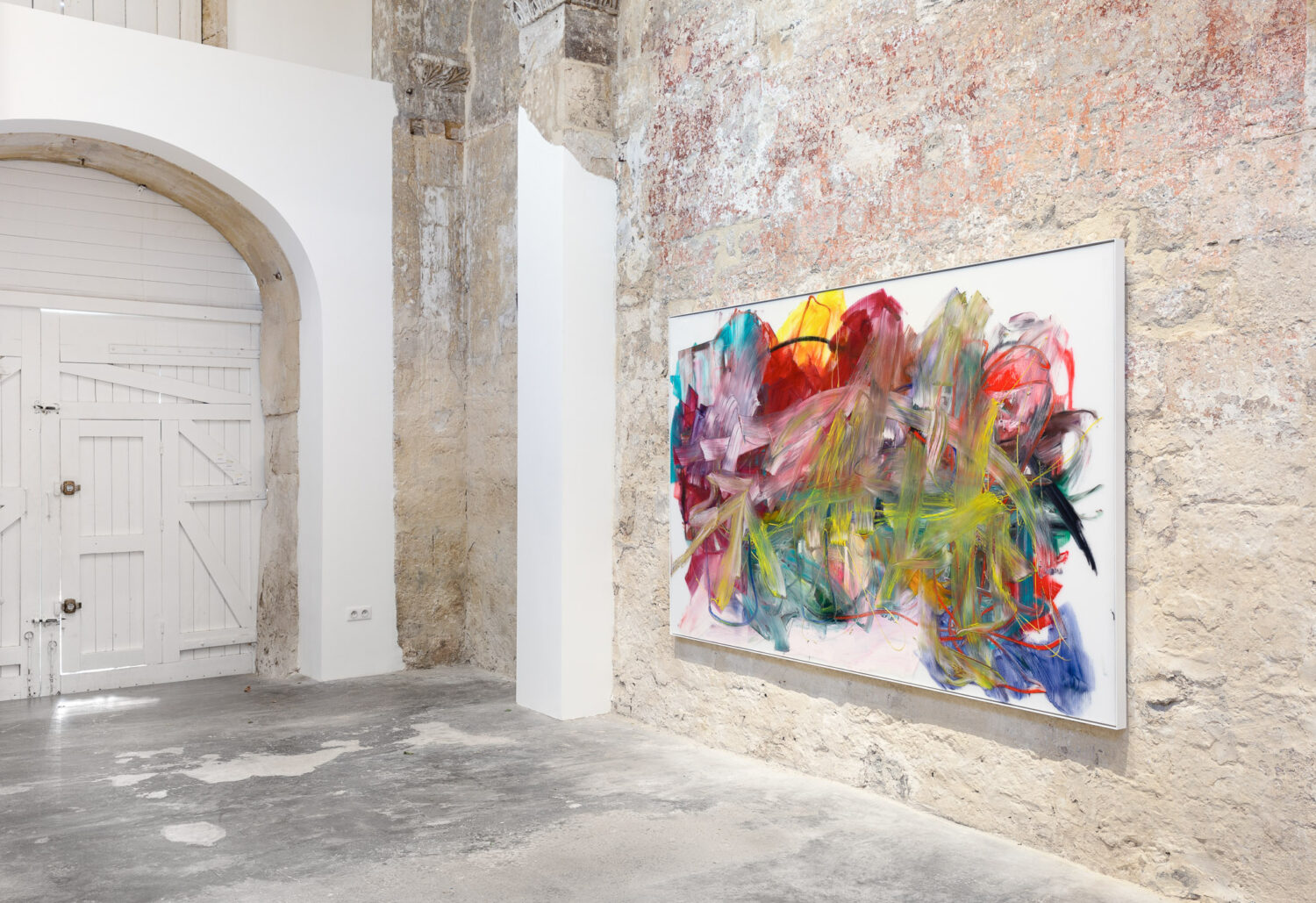

Past
Aaron Garber-Maikovska
Rancho
19 Aug - 11 Sep, 2021. Arles
Exhibition details:
Aaron Garber-Maikovska
Rancho
Aug 19 – Sep 11, 2021
Gallery:
19, rue de la Madeleine
13200 Arles
Presenting a series of oil paintings in a new and previously unexplored landscape format the exhibition will fuse the maximalist treatment of pictorial space that has characterized his recent work and an interrogation of the relationship between the artist’s body and its environment that is central to his practice.
The exhibition’s title, Rancho, conjures the American West where the artist was raised and still resides, in particular horse and cattle farms made iconic by countless cinematic portrayals. An imaginary and real setting which finds an unlikely parallel in Arles, France, home to a still persisting way of life grounded in agriculture and ranching within the intensely preserved natural region of the Camargue. It was in this region that the earliest european western films were shot in the 1910s by the Marquis Folco de Baroncelli and film director Jean Durand. Together the pair proposed and disseminated a representation of the landscape between the Mediterranean and the Rhone into a mirror image of the American west.
Inhabiting this setting, the paintings that comprise Rancho arise from Garber-Maikovska’s performative experiments whose expressionistic relationship to the world serves as a matrix of gestational vocabulary which remains immediate, real and elusive. Compulsive kinesthetic investigations constitute an urgent mixture of dance, mime, ritual, theater and protest. Initially improvised in carefully chosen semi-urban, liminal spaces both public and private (parking garages, shopping malls, chain restaurants, art galleries), these actions serve to not only transcribe a unique body of visual language but to address the paradoxical reality of corporeal existence within contemporary landscapes.
Like the Far West, the Camargue is in many ways a cultural construction. A partial fantasy born from a history of image production to become central to the socio-economic development and identity of the territory. The city of Arles, whose current identity is being further redefined by a multiplicity of powerful actors and initiatives becomes for the artist an apt setting for a gathering of what is in essence landscape paintings. Presented in the historic center of the city, the works seemingly amplify a state of flux found at the horizon of tradition and socio-cultural production. They do so by not only being born themselves from an equivalent horizon, that of the body and shifting environments, but by existing towards representation. A representation (a landscape) of the horizon itself; where the inertia of the performative act meets the tangibility of the material environment and the friction of history.
